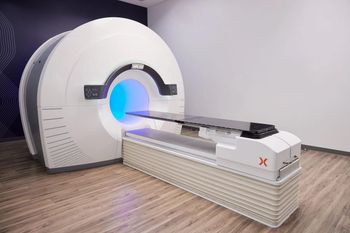
Analogic looks for growth through Anexa subsidiary
Analogic subsidiary Anexa appears to be on solid footing following its first RSNA meeting and introduction of a new product developed by its parent company.
Analogic subsidiary Anexa appears to be on solid footing following its first RSNA meeting and introduction of a new product developed by its parent company.
Established days before the 2003 RSNA meeting, Anexa spelled out its mission as providing advanced integrated digital imaging in select domestic medical imaging markets. These include digital radiography systems, advanced application software through an agreement with Cedara, and key products from industry-leading OEMs.
The OEM arrangement was nothing new for Analogic. Anexa was established just as its longstanding and exclusive OEM relationship with another DR vendor, Kodak, expired. Now, Anexa sells Analogic technology through a direct sales force of five representatives that is expected to increase up to fourfold during the coming year, said John Ross, vice president of marketing for Anexa.
"Our establishment grew out of a realization that Analogic could expand its business by leveraging its technology to as many markets as possible," Ross said. "One of those markets that had received little attention was direct sales for technologies that either didn't have a home or had a home that was not exclusive."
Building blocks of the new subsidiary included a small group of DR experts, mostly engineers, pulled from Analogic. Sales and marketing staff were brought in from outside the company. Ross is a former vice president of sales for Swissray. Anexa president Mike Cordes joined Analogic from Philips Medical Systems. Dennis Runyan, vice president of sales, was formerly with SourceOne and Picker.
Anexa hit the ground running, introducing two systems in November 2003: the SyneRad Multi general radiography system, designed to support high-volume upright, table, and extremity exams; and the SyneRad CXR, for chest and other high-volume applications. Both systems use amorphous selenium flat-panel detectors. Days before the 2004 RSNA meeting, Anexa received FDA clearance to begin marketing its SyneRad Omni, a multipurpose DR system featuring amorphous selenium flat-panel detectors.
"We decided to leverage the cost efficiencies of owning our own technologies, plus software and hardware, to provide a value-based product that had something new to offer," Ross said.
To that end, Anexa has teamed with Anrad, another Analogic subsidiary. Established in 1999, Anrad develops, manufactures, and integrates a wide range of direct conversion x-ray detectors and associated electronics subsystems for DR systems.
"That (full- or partner ownership) philosophy is something Analogic has had a lot of success with in two other areas: clinical ultrasound, with B-K Medical, and cardiovascular image management, with Camtronics," said Paul Roberts, director of communications for Analogic. (Both B-K and Camtronics are Analogic subsidiaries.)
Analogic has its sights set on substantial growth and is counting on Anexa to help get it there. Omni, which uses the Anrad detector, will play an important role in achieving that growth. It will begin shipping in the second quarter of 2004. No sales projections are publicly available.
The Multi, which uses the same detector technology supplied to Kodak for its DirectView line, began shipping in September. About a dozen had been shipped by year-end.
"Our initial goals were to have a successful product launch with a few systems to ensure that we had a fully functional product," Ross said. "That's been done. All that's left now is to get into mass production on the detector and get those systems married and out the door."
The company is focusing on three areas of medical practice: the emergency room, radiology department, and orthopedics. The direct sales approach to these areas will be augmented by leading dealers in certain geographic regions. Ross expects a return on investment, and soon.
"There's no reason to have any kind of company if you're not going to hit $40 million or so in a reasonable amount of time," he said. "We believe the market we serve will continue to have demands placed on it. Our success will lie in our ability to have products available that will meet those needs."
Newsletter
Stay at the forefront of radiology with the Diagnostic Imaging newsletter, delivering the latest news, clinical insights, and imaging advancements for today’s radiologists.




























